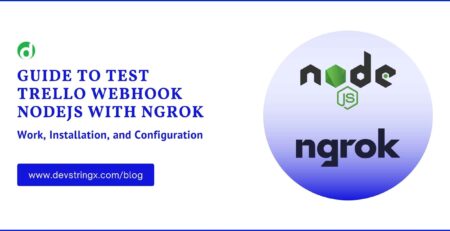Custom Software Architecture Patterns: Choosing the Right Approach – DS
There is no one-size-fits-all approach to consistently developing and adapting the world of software development. Every organization has its needs and limitations that call for customized solutions, and it is precisely where custom software architecture patterns come into play. These patterns serve as a guide for designing software systems that are tailor-made to meet an organization’s requirements, providing flexibility, scalability, and ease of maintenance. However, selecting the custom software architecture pattern can be a challenging task.
Let’s explore multiple custom software architecture patterns to offer insights on selecting the most practical one for your project.
Understanding Software Architecture Patterns
Before inspecting custom software architecture patterns, let’s briefly discuss what these patterns are and why they hold significance. Software architecture patterns are high-level solutions that are re-utilized to address design challenges found in software systems. They provide an approach to designing and organizing software components, making developing, maintaining, and scaling applications easier.
These patterns have been enhanced over time based on practices and proven principles. Some prevalent examples include Model View Controller (MVC), Microservices, and Layered Architecture. While these established patterns are high-level tools, they may not always perfectly align with the requirements of a given project.
Importance of Tailored Software Architecture Patterns
Each project is distinct, and so are its requirements! Off-the-shelf architecture patterns may not always be the best choice for a project, particularly when dealing with intricate, specialized, or innovative solutions. Custom software architecture patterns are specifically designed to fill this void by offering an approach that caters to the needs of each project.
1) Flexibility and Scalability
One of the advantages of custom architecture patterns is their ability to provide flexibility. Organizations can enhance their architecture to meet evolving requirements, ensuring software remains aligned with business objectives. This adaptability is especially crucial in today’s changing technology landscape, where market demands and technologies constantly evolve.
Scalability is another aspect that custom architecture patterns can address effectively. Different projects have scalability requirements, and a tailor-made architecture can efficiently handle anticipated growth without complexity or overhead.
2) Domain Specific Solutions
Custom software architecture patterns are crucial for industries with domain-specific requirements, including healthcare, finance, or aerospace. These industries require software to fulfill their compliance, security, and data handling needs, which cannot be adequately addressed by generic architecture patterns. Therefore, it is recommended to develop custom solutions to meet these demands while ensuring software remains robust and maintainable.
3) Legacy System Integration
Numerous businesses have existing systems that they need to integrate into software projects. To seamlessly incorporate these legacy systems with software solutions, it’s important to choose custom architecture patterns. This integration is crucial for businesses that aim to streamline their operations without disrupting their workflows.
Selecting the Right Approach
It is imperative to be aware of selecting a custom software architecture pattern for a project, as this decision can significantly impact its success.
Here are some key factors to consider while making a choice:
1) Project Requirements
Start by understanding the project requirements. What are the specific goals and objectives? What are the functional and non-functional requirements? Are there any compliance constraints that must be followed? The chosen architecture pattern should closely align with these requirements.
For instance, if real-time data processing is involved in your project, an event-driven architecture might be suitable. On the other hand, if you’re developing a content management system, a modular architecture pattern could be more appropriate.
2) Team Expertise
Consider your development team’s expertise when evaluating architecture patterns. Various patterns may require skill sets and levels of expertise. Therefore, select a pattern your team feels comfortable with, or else, prepare to invest in training and skill development.
3) Technology Stack
The technology stack you intend to use can impact your decision to choose the fitting architecture pattern. Some patterns are better suited for certain technologies. To help you understand better, here’s an example. If you’re developing a web application using JavaScript and Node.js, a Single Page Application (SPA) architecture might fit naturally.
4) Future Growth
Consider the long-term vision for your project. How do you anticipate it evolving? The architecture pattern you opt for should accommodate growth and changes. Ensure avoiding patterns that could create bottlenecks or make adding features challenging.
5) Budget and Time Constraints
Take into account the project’s budget and timeline. Custom architecture patterns may require time and resources as compared to off-the-shelf solutions. Make sure that your chosen pattern aligns with the constraints of your project.
6) Testing and Maintenance
Consider long-term maintenance and testing requirements while choosing an appropriate pattern. A well-designed architecture should make it easy to facilitate software testing and maintenance efforts. On the contrary, complex custom patterns can lead to difficulties in maintaining the system down the line.
7) Risk-Evaluation
Assess the risks associated with the architecture pattern you have chosen. Are there any pitfalls or challenges that may arise during implementation? Perform a risk assessment and devise strategies to address and mitigate potential issues.
Good to Read:- List of Top Software Development Tools
Popular Custom Software Architecture Patterns
Following is a brief account of custom software architecture patterns commonly adopted and contemplated by organizations.
1) Domain Driven Design (DDD)
Domain Driven Design is an approach that emphasizes modeling the problem domain and its related business logic. It encourages collaboration between developers and domain experts to establish a shared understanding of the problem space. DDD is a suitable choice for projects with complex domain models.
2) CQRS (Command Query Responsbility Segregation)
CQRS is a pattern that segregates read and write operations within a system. It proves favorably beneficial for applications dealing with high volumes of both reading and writing activities. CQRS simplifies scalability, enabling independent optimizations of read and write models.
3) Hexagonal Architecture (Ports and Adapters)
Hexagonal Architecture, also known as Ports and Adapters, focuses on separating the core business logic from external dependencies. This approach promotes testability and flexibility by defining precise interfaces (ports) through which the application interacts with the world (adapters).
4) Event Sourcing
Event Sourcing is a pattern that captures every change made to an application’s state as a series of immutable events. This approach is particularly beneficial for systems that require auditing, versioning, or complex data analysis. By using Event Sourcing, the entire history of an entity can be preserved.
5) Serverless Architecture
Another emerging trend in software architecture is Serverless Architecture, which involves outsourcing the infrastructure management to cloud providers. While it may not be suitable for every project, this approach offers advantages like scalability and reduced operational burden.
TakeAway
In conclusion, selecting the appropriate custom software architecture pattern is a significant decision in any software development project. It requires understanding project requirements, team capabilities, technology choices, and long-term goals. While off-the-shelf architecture patterns are valuable, there are often cases where custom solutions are necessary to meet project demands—especially in domains with specific regulatory requirements or complex integration needs.
By considering the factors discussed in this article and exploring custom architecture patterns, you can make an informed decision that aligns with your project goals and establishes a solid foundation for a successful software solution.
Elevate your business with bespoke solutions – Hire Devstringx Technologies the leading custom software development company for innovation that defines success!














